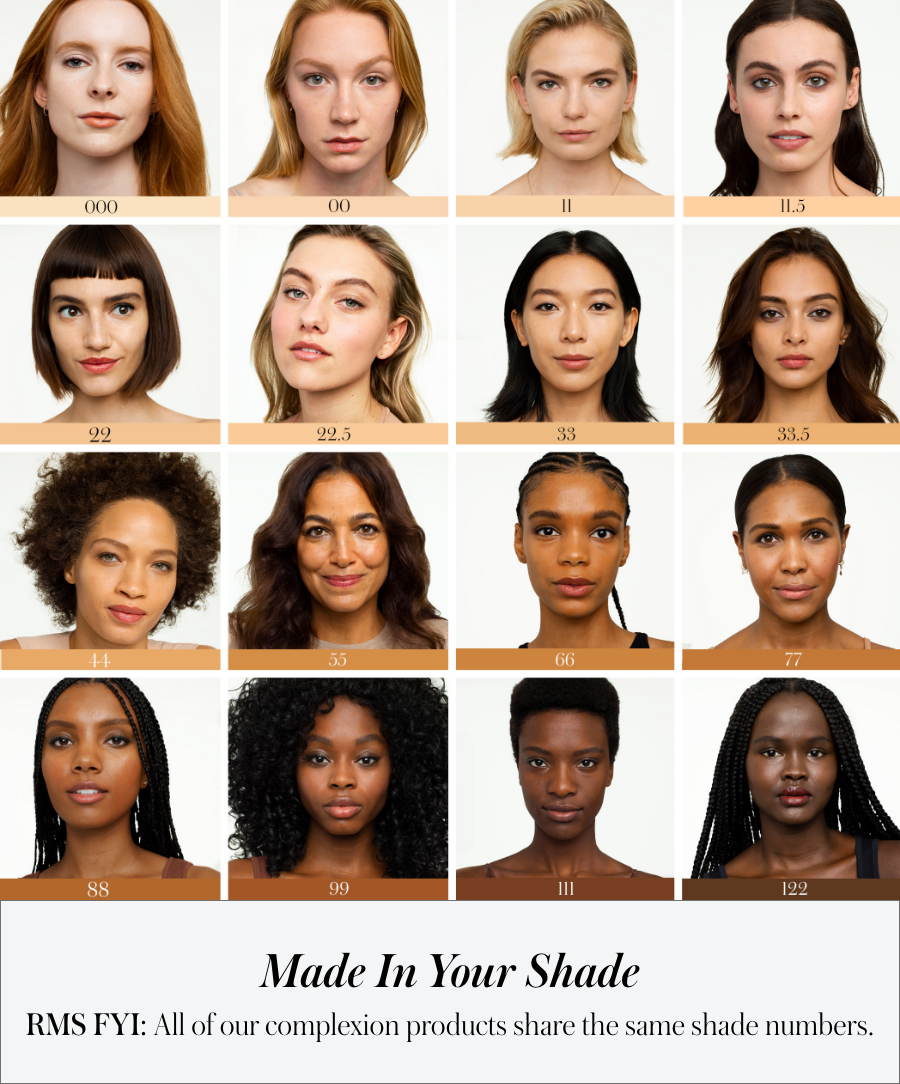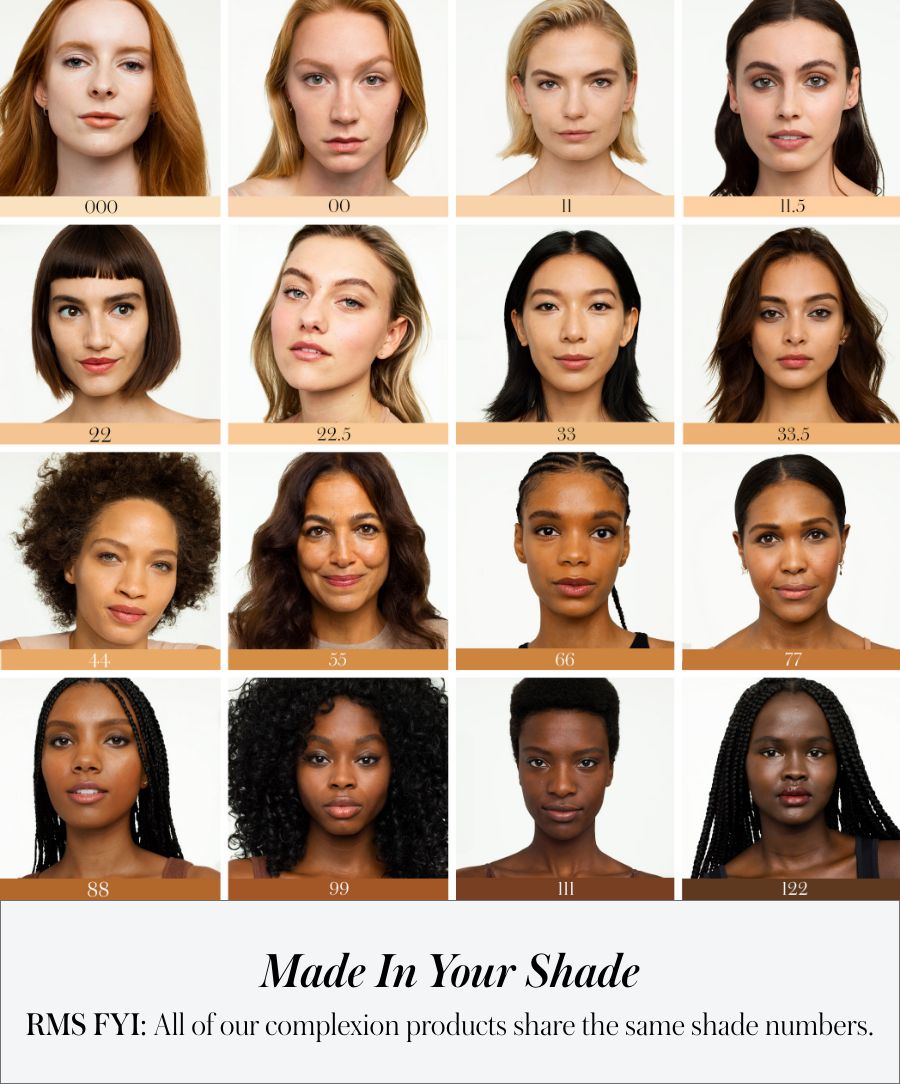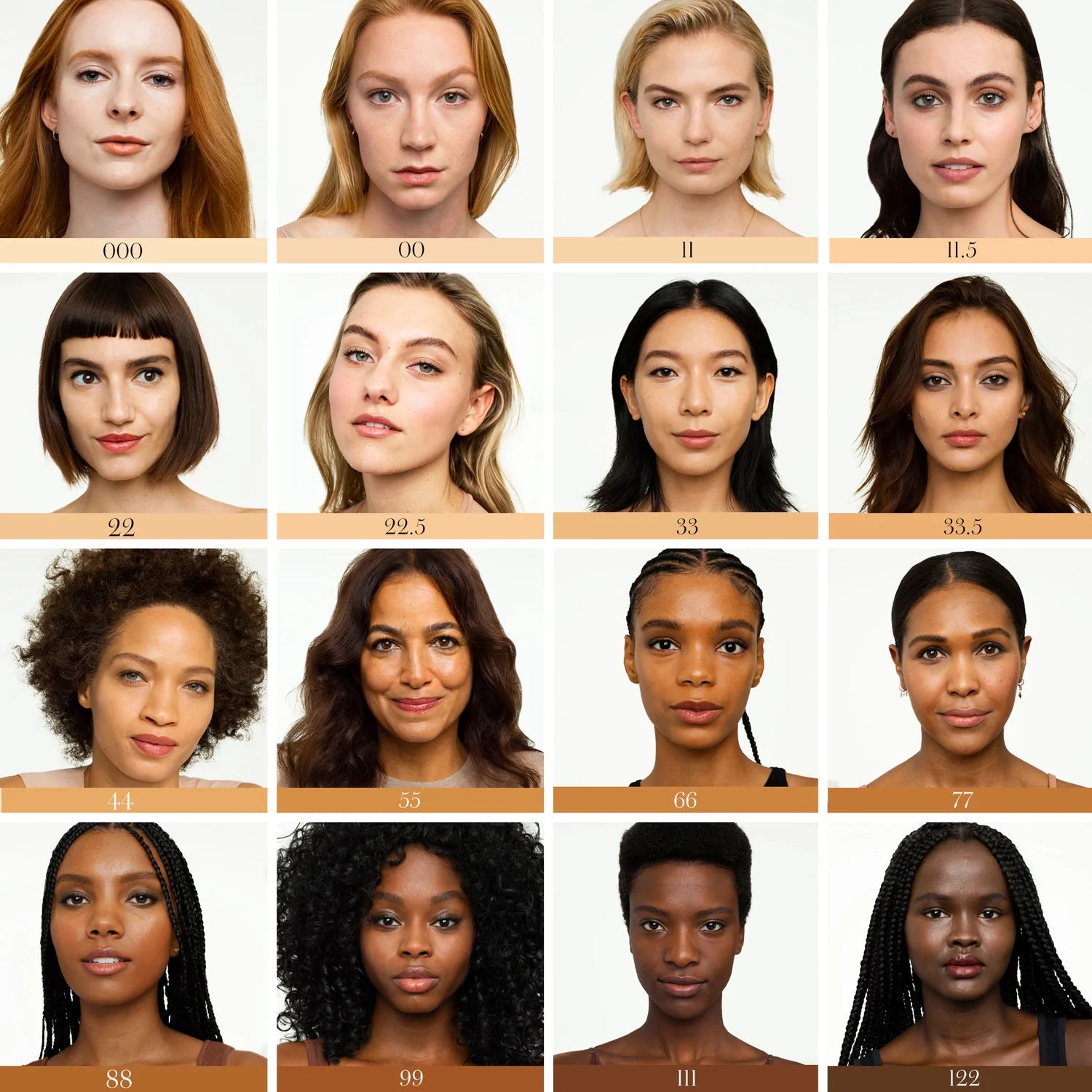Powder vs. Liquid Foundation: Which One Is Better?

Cream, liquid, powder, and gel foundations are all ways you can apply makeup coverage to your skin.
Whether you’ve been wearing foundation for years or are just now diving into the makeup game, we can help you learn which is best for your needs.
Two extremely popular formulas for foundation are liquid and powder. Liquid foundation dates back for decades and is probably the type of foundation you first remember using. Powder foundation is slightly newer and applied differently than liquid.
Let’s talk about the differences between the two and which is better. Here’s a hint: it really depends on what you need and want from your foundation. First, let’s talk about skin type and discover why choosing a foundation based on your skin type is so important.
Does Skin Type Impact Foundation Application?
There are generally four different skin types recognized by beauty professionals. A skin type refers to how your skin behaves on its own, without products. To find your skin type, wash your face with a mild cleanser, and don’t apply any other products. Check the condition of your skin 30 minutes after you have washed it.
Normal Skin
Normal skin is skin that is neither oily nor dry. Normal skin has an overall even tone and texture, feels smooth to the touch, and feels comfortable. Most of the time, it’s hard to achieve “normal” skin. Most of us have skin that is either dry, oily, or somewhere in between.
Dry Skin
Skin that feels tight, stretched, and itchy is dry skin. Dry skin may peel, flake, and feel chapped. You may have dry skin seasonally or develop it as you get older. As we age, our sebaceous glands may produce less sebum, which can also cause our skin to become drier.
Oily Skin
Skin that feels slippery to the touch is likely oily skin. Oily skin may always look shiny and may also be more blemish-prone.
The products we use to combat oily skin, like oil-free cleansers, can sometimes do more harm than good. When we strip skin of its natural moisture, sebaceous glands will naturally produce more oil to compensate.
This is why some people with oily skin choose to use the oil cleansing method to care for their skin. Coconut oil has cleansing properties and can dissolve like-kind, which means it’s effective in removing excess oil without stripping skin of its natural moisture levels.
Combination Skin
If your cleansed skin feels dry in some areas and oily in others, you likely have combination skin. This is the most common skin type, and most people with combination skin will have oily areas in the T-zone and dry patches on the cheeks.
It can be tricky to deal with combination skin, but with natural, clean ingredients, you can bring your skin back into balance.
What Are the Basics of Powder Foundation?
Powder foundation is usually finely milled and may contain mineral ingredients. Some of the most popular brands market their powdered foundations as “mineral wear” or “mineral foundation.” This means that they use minerals to create richly pigmented shades. It doesn’t necessarily mean that it is natural, clean, or good for your skin.
Skin Types for Powdered Foundation
You’d likely assume that oily skin is a prime candidate for powder foundation, and it can be, provided the powdered foundation is high quality and has at least one occlusive ingredient that helps it avoid complete absorption into the skin.
Normal and combination skin types can benefit from powdered foundation, especially if you want lightweight coverage and a slightly matte to fully matte finish.
How To Apply Powder Foundation
It’s usually recommended that you apply powder foundation with a brush. You may want to use several different brushes depending on where you apply the foundation. A large wedge-shaped brush, like RMS Beauty’s Skin2Skin Foundation Brush, will give you even coverage and help the powder blend easily so that you don’t end up with obvious lines and dark spots.
What Should I Know About Liquid Foundation?
The OG of foundations, liquid foundation is still a great way to get the makeup coverage you want in a format that is buildable and easy to use. Liquid foundation contains ingredients that help it slide easily onto your skin, even out skin tone and texture, and blur blemishes.
Skin Types for Liquid Foundation
There’s no skin type that can’t use a liquid foundation. The key is to understand your ingredients. For instance, many liquid foundations contain silicone. This synthetic ingredient can damage your skin barrier and cause dryness, leaving dry skin feeling even more parched.
Liquid foundation that contains mineral oils can clog pores and make oily skin even slicker. Silicone-free formulas containing plant-based oils are the best option for all skin types. These oils have properties that help them work synergistically with your skin to increase radiance and help balance skin tone.
How To Apply Liquid Foundation
Liquid foundation can be tricky to apply. Applying too much can look obvious and can create dark lines around your jaw and hairline. To apply it like a professional, try using a beauty sponge. RMS Beauty’s Skin2Skin Beauty Sponge is the perfect solution for applying liquid foundation naturally.
Shaped with a fingerprint-like tip, our beauty sponge effortlessly presses foundation into your skin, helping keep your look natural. Perfect for buildable coverage, our sponge won’t absorb makeup you’ve already applied when you go in to apply another coat.
If you’re looking for a foundation to try, look to the RMS Beauty ReEvolve Natural Finish Liquid Foundation. Our new liquid foundation is formulated with ingredients that make it part skincare, part cosmetic. With 12 hours of water-resistant, sweat-resistant coverage, you’ll find it blends easily, supports skin tone and texture, and keeps your skin’s natural moisture level balanced.
How Do Powder and Liquid Foundation Compare?
Neither powder nor liquid foundation is necessarily better than the other. Depending on what you need from your foundation, one may be a better fit for you.
Best for Full Coverage
Liquid foundation that is buildable is a better choice for users who want a full coverage foundation. Normally, liquid foundation is available in different weights (medium to full coverage). You can also add layers of foundation in areas that need more coverage, which makes it perfect for concealing blemishes or areas of uneven skin tone.
Best for Light Coverage
You simply can’t beat a powder foundation for light coverage. Even sheer liquid foundations usually have more coverage than a powder foundation. In addition, it’s easier to control the amount of powder on your skin because you can remove it more easily than a liquid foundation.
For Natural Looks
For weightless, natural looks, you’ll almost always choose a liquid foundation. Powder foundations can look natural, but the more coverage you add, the more matte your finish becomes. For dewy, natural-looking skin, a lightweight liquid foundation is key.
For Long-Lasting Wear
Many formulas boast wearability that lasts for hours, but it’s very difficult to formulate a powder foundation with this capability. Liquid foundation absorbs into your skin and usually includes ingredients to help keep it in place. If you double down and use a primer with your liquid foundation, you’ll get even more lasting coverage.
If you have oily skin and choose a powder foundation, you may need to reapply it numerous times a day. That can be difficult because you’ll have to reapply your powder foundation on top of your other cosmetics, like blushes and luminizers.
For Buildability
This is highly a matter of preference as powder and liquid foundations offer some buildability. However, it’s important to note that the more powdered foundation you use, the heavier and more matte your finish will be. If your goal is a more natural look, you’ll likely want to use a buildable liquid foundation.
For Ease of Application
If you’re looking for the easiest way to get flawless skin without needing a million different application techniques, powder foundation is a solid choice. Powder foundation is easy to apply and blends very easily. It’s usually very easy to move powder application with a brush and spread it out if you get too much in one spot.
Liquid foundation doesn’t have to be difficult to apply. If you need a little tutorial, we’ve got a helpful step by step guide that makes it simple to apply liquid foundation like a makeup artist.
The Power of Powder, the Luxury of Liquid
No matter what formula works best for you, there are benefits to using both powder foundations and liquid formulas. Determining your skin type and shopping for the best product to work with your skin will help you achieve a flawless finish every time you wear your makeup.
For products that are the cleanest and greenest products in the industry that outperform traditional cosmetic favorites, trust RMS Beauty and our line of skincare-worthy cosmetic products.
Sources:
How to control oily skin | American Academy of Dermatology.org













